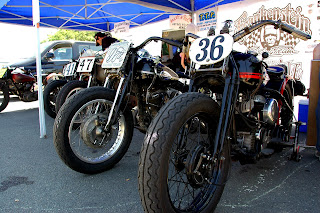I have already spoken about one of the painting exhibitions seen : it concerns the work of Marc Desgrandchamps, currently on show at the Musée d'Art Moderne in Paris. Under the same roof, I also visited the exhibition of Van Dongen's paintings, about which I will speak more shortly. In the meantime, here are a couple of the works that I particularly liked in this extensive retrospective. Both are part of his early work, which is not to say that I disliked all of the later paintings.
The third exhibition was of another contemporary (and figurative) painter, called Gilles Sacksick, of whom I had never heard before, and to which I was attracted by posters in the metro. It is quite unusual for a private gallery to adopt this means of getting people to come and see shows and I hope for their sake that this worked out financially. The works were on sale for higher prices than I can afford, but not outlandish by the standards of the ridiculous prices fetched by some contemporary art. Here is one of the painting from the exhibition: it is in fact the one used (partially) for the poster that first attracted me there.
There is something about some of this painter's work that reminds me of Balthus, on account of the timeless, hieratic air that the models, or the scenes (landscape or still life), manage to take on. Much of what I saw in the gallery was not so interesting however, rather mawkish and obviously pretty. Well made, but dull. It is so hard to please all the people, all of the time!
Now to the biking event, which was something called Iron Bikers, devoted to "bikes with character" (like the "character" above?) and held on the small racetrack north of Paris and just south of Roissy airport, called Circuit Carole.
This was not a race, but a 2-day gathering of bikers, some of whom had elected to enlist themselves and their machines for track sessions. The only pre-requisite seemed to be that the bikes had this element called "character" (whatever that means). Therefore most of them were on the old side, whether road bikes, bitzas or out-and-out racers. There were even a couple of Supermotard type machines that tended to run rings around the heavier stuff on corners. Sessions were of about 15 laps (I didn't count them), and mixed all kinds of machines in smallish groups.
The disparity of the machines was sometimes striking, as one could see in the same group 1940-odd Harley 45's with tank gearshifts, a pristine looking Norton Commando, a bright yellow show condition Honda CB 6 cylinder, various Tritons and a very swift racer based on a 450 Yamaha engine in a special frame built by Alain Tailleux (see below : it's the red and silver one).
This bike went around the track like shit off the proverbial and looked like it lapped everyone else twice. If I had the cash, I would get this guy to build me something. The Harley boys, with their string of WL 750's with hand shifts and foot clutches (there was also an Indian mixed in with them), looked like they were having fun too with some fairly wild styles of riding and plenty of angle. Some of the other machines being collectors' items, the riders weren't always pushing them too hard, but all were having fun. Here is the Harley paddock. I like their team name: Frankenstein racers!
Not sure the hand shift would have made for easy work coming into the corners, but then these things are like tractors and barely need to be taken out of 3rd (top) gear, and this minor handicap didn't appear to slow these boys down much. They made a hell of a noise too !
I will show you more of this fun event shortly, including some of the goodies I saw in the paddock. My trip included a meeting with Frank Chatokhine who gave me news of progress on the Norton Commando. It should be ready at the end of the month, so watch this space! Frank had blown up his Triumph Speed Twin on the first day and his dad has busted the gearbox on his Velocette, so I didn't see them on the track on Sunday.
And the rugby games ? Well I sadly missed the England vs NZ under 20's world cup final, which saw the All Blacks win by (I think) 33-20 as French TV switched it to another channel that I don't have. Bet they wouldn't have done this had France been in the final! Instead of this, Eurosport 1 inflicted a woman's soccer match on us! No problem with that in principle but I dont' follow soccer at all and the rugby game was a final after all. The baby blacks are clearly the best and have now won all 4 of these competitions. I did see parts of the two Super 15 games, both played in New Zealand and both won by NZ teams. The other two semi-finalists will be the Cheetahs from South Africa, and the Queensland Reds from Australia.
Long day and great weekend, sun burns and all.





















































